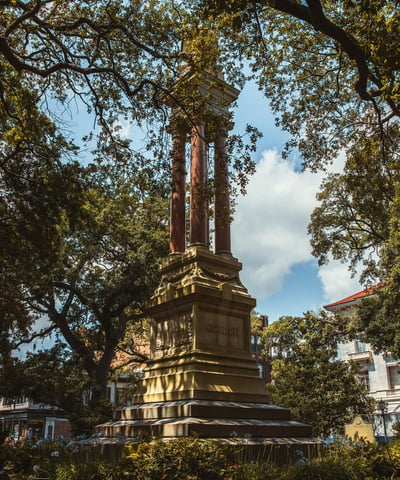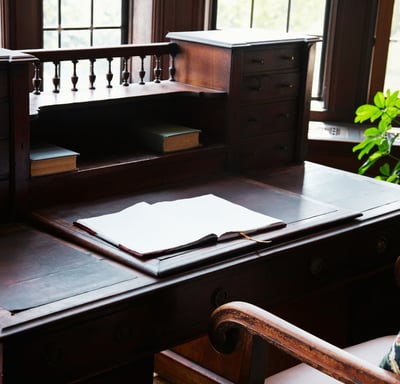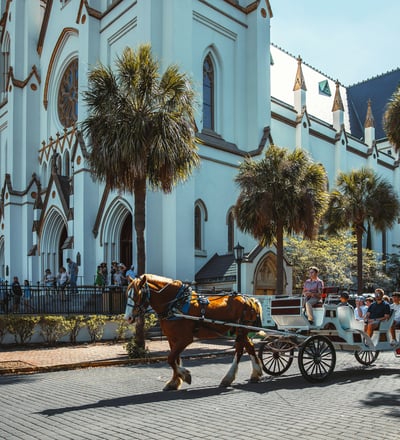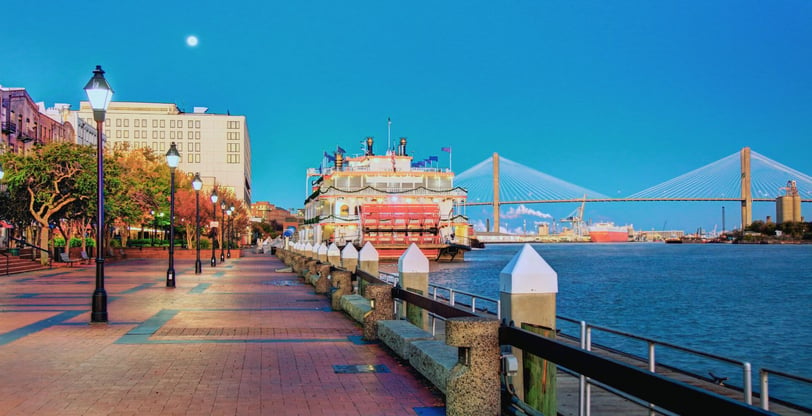
The Soul of Savannah: Wandering Through Stories, Songs, and Shadows


The Amtrak Silver Meteor hummed softly as it pulled into Savannah’s Amtrak Station, a modest stop located about five miles west of the historic district. The gentle rhythm of the wheels against the tracks faded into quiet stillness as I stepped onto the platform. The air was thick with the scent of magnolia and salt, mingling with the warmth of a Southern afternoon. A short taxi ride brought me into the heart of Savannah, where the city’s graceful, unhurried charm unfolded before me. The streets, lined with centuries-old oaks draped in Spanish moss, moved to a slow, Southern cadence—like a well-rehearsed waltz, both timeless and deliberate.
I had come to Savannah not just as a traveler, but as a seeker. The South held something in its folds that I wanted to understand—its music, its literature, the quiet weight of its past that lingered in the cobblestone streets and wrought-iron balconies. This was a place where history and art intertwined, where stories didn’t just live in books but whispered from Spanish moss-draped oaks, from the worn steps of antebellum homes, and from the echoes of an old blues melody carried on the breeze.
My lodgings were at the Hamilton-Turner Inn, a mansion turned boutique hotel that loomed in stately elegance at the edge of Lafayette Square. It had once been home to aristocrats, artists, and perhaps even ghosts, if the rumors were to be believed. I liked the idea of sleeping in a place with a story. The windows overlooked a garden square where azaleas still bloomed defiantly against the cooling air, and a wrought-iron balcony promised quiet nights beneath the Southern stars.


After leaving my bags, I wandered toward Forsyth Park, drawn by the sound of a distant saxophone. The fountain stood in its eternal grace, flanked by oak trees whose limbs stretched wide as if offering a silent welcome. The music drifted from a street performer, his fingers coaxing something mournful yet sweet from the brass. I dropped a bill into his open case, and he nodded in quiet gratitude.
Savannah was a city of artists and poets, of storytellers who spun history into something tangible. I walked through Madison Square, past the Mercer-Williams House, where scandal and literature intertwined in the infamous Midnight in the Garden of Good and Evil. The house, with its red brick facade and arched windows, seemed to watch me with knowing eyes. Here, art was not just framed in museums—it lived in the architecture, the whispers of tour guides, the way the past never quite faded into silence.
As dusk fell, I found myself on River Street, where the Savannah River lapped gently against the old stone embankments. Gaslights flickered against brick storefronts, their glow reflecting off cobblestones worn smooth by centuries of footsteps. The scent of salt and seafood filled the air, and laughter spilled from open doorways. I stopped at a small jazz club, drawn by the rich voice of a singer weaving magic into the night. The room was dimly lit, the air humming with conversation and the occasional clink of glasses.
I ordered a bourbon neat and let the warmth settle into my chest as the music wrapped around me. This was the Savannah I had come for—a place where time unraveled slowly, where stories unfolded in the spaces between jazz notes and the creak of wooden porches. As the night deepened, I felt it—the quiet certainty that I was exactly where I needed to be, in a city that knew how to hold both history and possibility in the same breath.
Tomorrow, I would go deeper. Into the heart of its literature, its lingering ghosts, its melodies that never truly ended.
* * *


The following days in Savannah felt like a slow unraveling of history, melody, and lingering echoes of the past. I traced the footsteps of writers who once wandered these streets, their words still breathing in the warm, magnolia-scented air.
At Lafayette Square, I stood before the childhood home of Flannery O’Connor, the Southern Gothic storyteller whose sharp prose had shaped my own understanding of the region. The pale-bricked house held its own quiet dignity, and as I stepped inside, the scent of aged paper and polished wood filled the space. It was humbling to walk through the rooms where she had once sat, pen in hand, capturing the strange and the sacred of Southern life.
Another evening, I followed a recommendation from a local and stepped into The Pirates’ House, a tavern as old as Savannah itself. Stories of sailors, ghostly whispers, and hidden tunnels beneath the floorboards lent an air of mystery to the candlelit room. I ordered a drink, listening to a storyteller recount legends of the sea, of ships lost to the waves and the spirits they left behind. The flickering shadows on the wooden beams made the past feel closer, as if time had folded in on itself within these walls.
Each day stretched and blurred into the next, yet Savannah never felt rushed. I lingered over breakfast in a quiet café, watching horse-drawn carriages pass by. I wandered aimlessly, letting curiosity dictate my steps, allowing the city to unfold itself in fragments of poetry and song. Savannah was not a place to be hurried through; it was meant to be absorbed, to settle into the soul like an old refrain.
On my last night, I returned to Forsyth Park, where the fountain gleamed under the lamplight, the water catching silver reflections of the moon. I sat on a bench beneath the ancient oaks, Spanish moss swaying in the breeze like whispers of the past. There was a stillness here, a kind of quiet understanding between the city and those who came searching for something—history, beauty, or maybe just a moment of connection.


As I prepared to leave, I realized Savannah was no longer just a destination. It had become a memory already forming, a song still playing softly in the background of my thoughts. That evening, I took one last walk along River Street, where tourists strolled past old brick warehouses now turned into charming shops and restaurants. Couples leaned against the iron railing, watching the slow drift of boats on the Savannah River, while horse-drawn carriages rolled by on the uneven cobblestones. The air carried the scent of salt and something sweet—perhaps pralines freshly made in one of the candy stores nearby.


Some places pass through you like fleeting moments; others stay, becoming part of the stories you carry. Savannah, with its timeless grace, its words, its shadows and light, had settled deep within me. And long after I was gone, I knew I would see it still.
Beyond Savannah’s melodies and moonlit streets awaits a deeper journey. For a traveler’s guide to its historic squares, riverfront charm, and whispered love stories, read "Savannah, Georgia: Where Spanish Moss Whispers Old Love Stories."
For an exploration of Savannah’s literary legacies, haunted beauty, and cultural evolution, dive into "Savannah 2025: Southern Gothic, Literary Legacies, and Cultural Festivals."
✉️ Contact:
Curated by TrueTrip Hub |
© 2025 Invisible Atlas — All rights reserved.
Invisible Atlas
Journey Beyond the Visible
invisible.atlas@truetriphub.com
